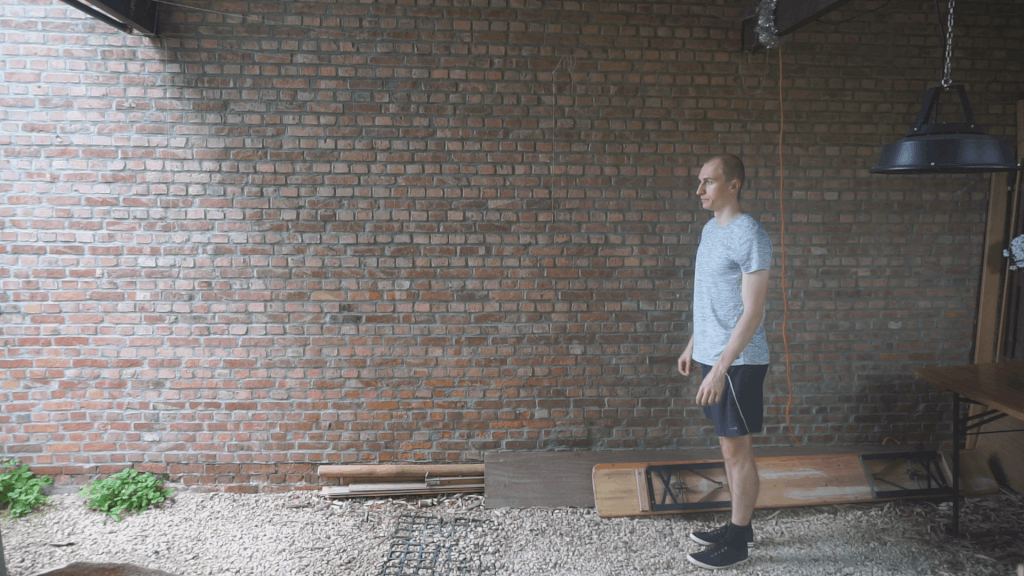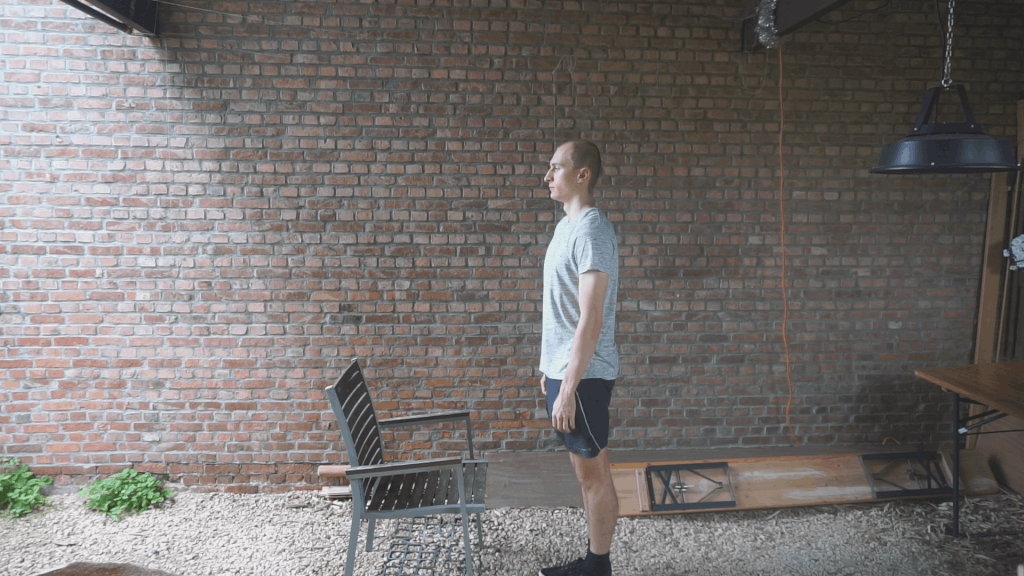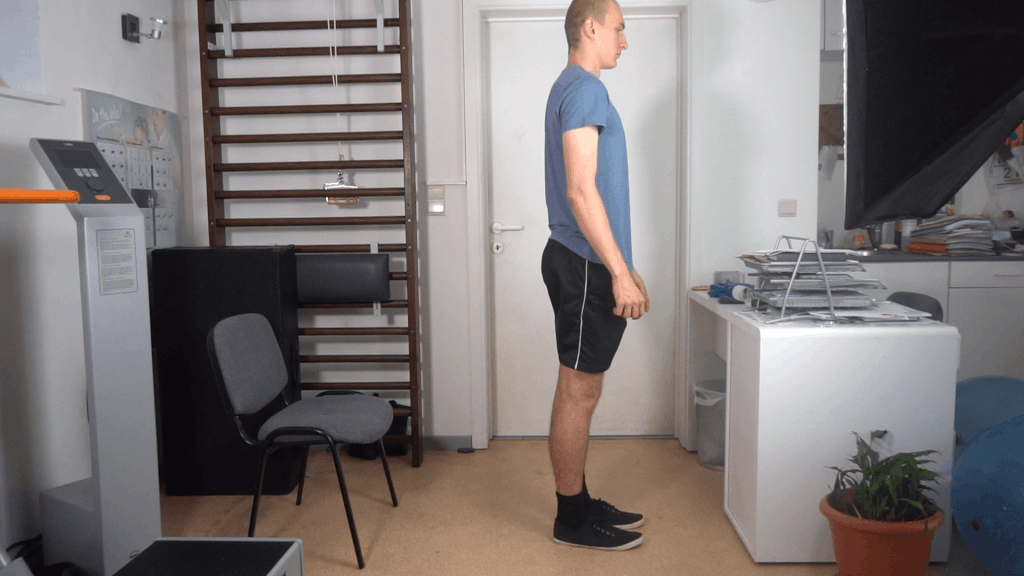Squats are one of the most powerful exercises out there but not everyone likes them. Discover a few exercise alternatives with similar effects.
Some of the benefits of squats include growing and strengthening your leg muscles, being easy to add resistance to, improving bone density, etc.
Whether you don’t enjoy squats, you want a more back-friendly alternative, or you want an alternative for any other reason, these squat substitutes can help you with some or all of these aspects.
1. Lunges
Walking lunges are a great alternative to squats, especially if you make the effort of putting your weight mainly on your front leg. Take the following steps to do two walking lunges:
- Stand up straight with your feet at more or less shoulder width.
- Take a big step forward so that you get into a position where both of your knees are at a 90-degree angle. Your front foot should be flat on the ground and your back foot should only touch the ground with the ball of the foot (front).
- Move your back foot forward and get into the same position as step 2 but with your other foot in the front.

How many lunges you should do depends on your training goals. To build muscle you want to do around 3 to 6 sets of 6 to 25 repetitions per leg.
Similar to squats it is relatively easy to add external weights to lunges.
Weighted lunges are different than weighted squats in that you preferably want to use weights like dumbbells, kettlebells, or a weighted vest where you can still use your arms for balance.
Weighted lunges also do not require as much extra weight since you put most of the weight on one leg.
2. Deadlifts
For the next exercise, you likely need external weights, preferably a barbell, or a resistance band. Take the following steps to do a deadlift with a barbell:
- Stand up straight with your feet at more or less shoulder width.
- Slightly fold your knees and tilt your upper body forward to grab the barbell on the ground.
- Stretch your knees and tilt back your upper body at the same time until your upper body and legs are stretched in one straight line. When doing a deadlift it is very important to keep your back in a straight line during the exercise.
- Slowly move back into the position of step 2.
Good technique is important in any exercise to avoid injuries but especially so for deadlifts. Before trying to deadlift the heaviest weights it is smart to improve your technique first by starting with light or no weights at all.
The deadlift engages your leg and back muscles. This makes it a great squat alternative.
3. Step-ups
For step-ups you need a stable object or platform strong enough to stand on. One of the best plyo boxes may be a good option depending on how much pressure you want to put on it.
If you want to use a lot of external weight, you may need to look for a concrete platform. Once you have a suitable object or platform, take the following steps to do a step-up:
- Stand upright in front of the object facing toward it with your feet at shoulder-width.
- Raise one foot and put it on the surface of the object. Make sure your sole is entirely on the surface.
- Raise your body by exerting pressure with the leg of the foot that is on the object.
- Put your second foot next to the other one.
- Step down with the first foot.
- Step down with the second foot.
- Do a repetition with the other foot first.

Compared to bodyweight squats, it is easier to keep a good posture while doing bodyweight step-ups.
4. Sled pushes
There is a piece of gym equipment that is a sled on which you can put weights. For this next squat alternative, you will need this piece of equipment and a suited surface to push the sled on.
Once you have one of these, take the following steps to do sled pushes:
- Load the sled with whatever weight you want to use.
- Hold the sled with your two hands and slightly less-than-stretched arms. Lower your upper body until it is in about a straight line with your arms. Keep your back straight throughout the exercise.
- Push the sled by taking step after step.
Good weighted sleds can also be used as a cardio tool but the goal here is to make the sled push a resistance training exercise. If you can gain a lot of speed you may want to increase the amount of weight on the sled.
Another thing you want to do to make the sled push as close to a squat alternative as possible is gripping it somewhere low. This makes it easier for your legs to do the full extension.
5. Leg presses
The leg press is a weighted resistance exercise that is often done on the leg press machine. Take the following steps to do this exercise:
- Adjust the machine for your requirements. Put the desired weight on the dedicated holders of the leg press machine. If you are not sure how much would be right for you, start small and build up from there.
- Take place in the leg press machine. Make sure your feet are flat on the pushing surface and about shoulder-width apart.
- Slowly push up the weight until your legs are slightly less than stretched.
- Lower the weight gain into the position of step 2 in a controlled motion.
There are a few differences between the seated leg press and weighted squats but one is that squats engage more different muscles during the exercise.
This makes the leg press not the perfect squat alternative but still a good option if you want to strengthen your legs with a machine.
6. Bulgarian split squat
For this next exercise, you want a step, bench, or any other stable object at about knee height. Once you have that, take the following steps to do a Bulgarian split squat:
- Stand in front of the stable object with your back toward it. Keep about half a leg distance between you and the box.
- Move one leg back and put the foot of this side on the object. The top of your foot should lean on the surface of the object.
- Slowly lower your hips by bending the knee of your stretched leg until your hip is at about the height of your knee of the previously stretched leg. Use your arms for balance if needed.
- Push yourself up again into the position of step 2.
- Repeat the same number of repetitions on the leg of the other side to keep your muscle distribution balanced.

The Bulgarian split squat looks similar to lunges but because one leg is raised, more weight rests on the other. This makes that Bulgarian split squat a great leg exercise if you do not have a lot of external weights available.
7. Hack squat machine
The hack squat machine is similar to the leg press machine. The difference is that instead of your feet moving, your shoulders will move like with a regular squat.
You can basically describe the hack squat machine as a slanting machine squat. Using it is very straightforward.
Like the regular squat, this gym machine mainly works leg muscles like the quadriceps, hamstrings, and glutes.
8. Good morning
For the good morning exercise, you likely need some extra resistance in the form of a barbell or resistance band. Initially keep the resistance low to learn the right technique.
Take the following steps to do a good morning with a barbell:
- Set up the barbell racked at about chest height.
- Step under the barbell, put and hold it on your shoulder, and unrack it.
- Take a few steps back and put your feet at about shoulder-width.
- Tilt your upper body forward as far as is comfortable with a good posture (but not farther than a horizontal line). At the same time bend your knees a small amount.
- Return to the position in step 3 in a controlled motion.
The good morning may look similar to the squat but you go a lot less through your knees. This exercise engages your glutes, lower back, core, and hamstrings.
9. Glute-ham raise
For this next exercise, you need a glute-ham raise bench. This is a machine where you can secure your feet behind two pads and rest your hips on a rounded pad.
Because of this rounded pad, you can also fold your knees. Take the following steps to do a glute-ham raise:
- Adjust the settings on the bench for your body proportions.
- Take place on the glute-ham raise bench facing downwards with your hips on the rouned pad and your feet behind the foot support. Make sure your ankle and hips are in a stable position and let your upper body hang downwards.
- Slowly raise your upper body until it is in a straight line with your legs. Keep your back straight throughout the exercise.
- Fold your knees until your upper body is in an upward position or until further would be unstable.
- Stretch your knees again.
- Lower your upper body in a controlled motion until it is in the position of step 2.
Because folding your knees is part of the movement you also engage your quadriceps and hamstrings. You would not get this movement with similar roman chair exercises.
If the bodyweight glute-ham raise is not challenging enough you can hold extra weights like a weight plate, dumbbells, kettlebells, etc.
10. Hip thrusts
Hip thrusts are similar to glute bridges but instead of doing them on the ground, you will need a bench or any other stable object of the right height.
Take the following steps to do a hip thrust:
- Sit right in front of the bench or other object you will use with your back slightly over the edge. Make sure the object is stable. Place your feet slightly wider than shoulder-width in a position where your knees will be at a 90-degree angle in the next step.
- Move up your hips until your body is in a straight line from your knees to your shoulders.
- Slowly lower your body again.
One of the most common ways to add extra resistance to hip thrusts is with the help of a barbell.
Hip thrusts mainly engage your glute, also known as your butt, muscles. This makes the hip thrust not the best squat alternative for people who are looking for a full leg workout.
